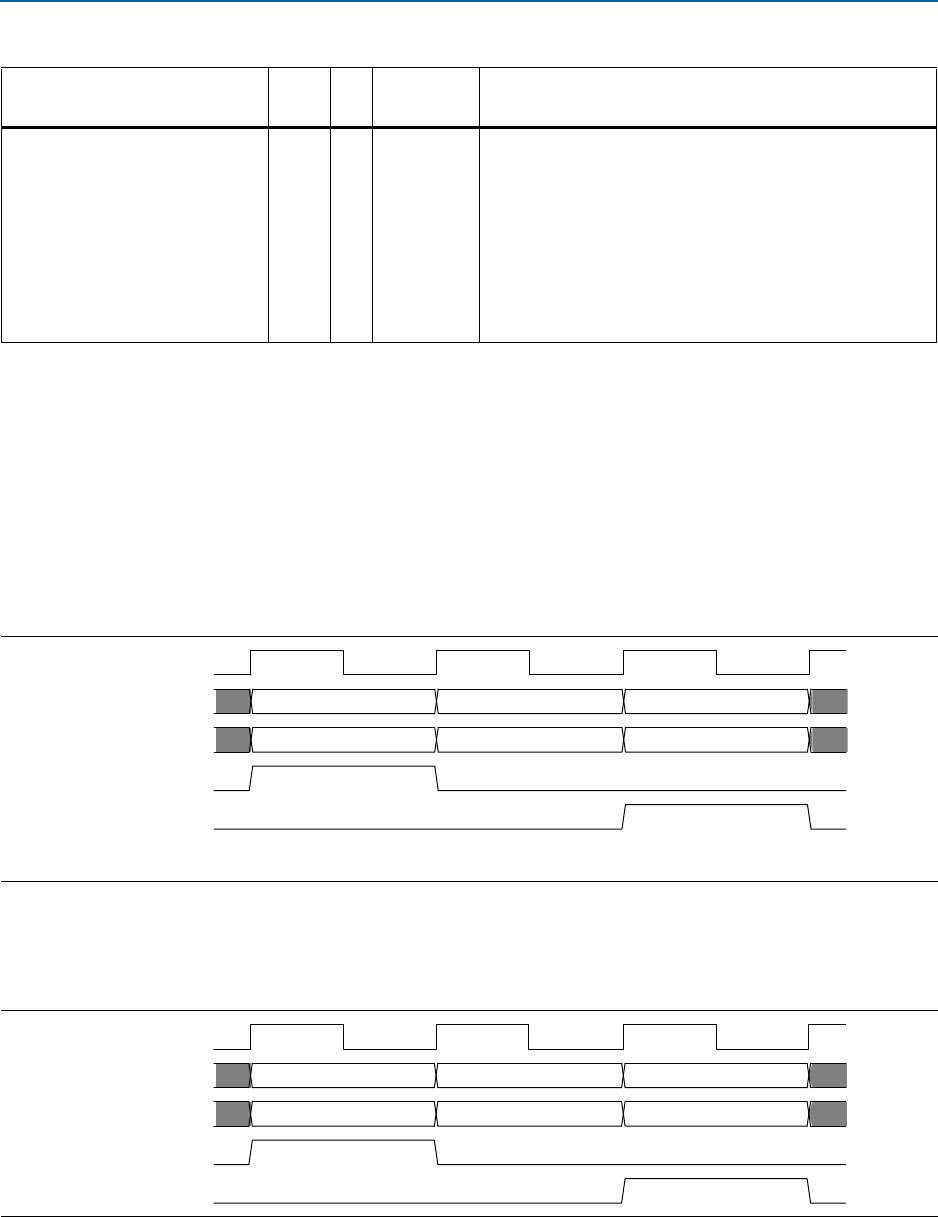User guide
Table Of Contents
- Cyclone V Hard IP for PCI Express User Guide
- Contents
- 1. Datasheet
- 2. Getting Started with the Cyclone V Hard IP for PCI Express
- 3. Getting Started with the Avalon-MM Cyclone Hard IP for PCI Express
- Running Qsys
- Customizing the Cyclone VHard IP for PCI Express IP Core
- Adding the Remaining Components to the Qsys System
- Completing the Connections in Qsys
- Specifying Clocks and Interrupts
- Specifying Exported Interfaces
- Specifying Address Assignments
- Simulating the Example Design
- Simulating the Single DWord Design
- Understanding Channel Placement Guidelines
- Adding Synopsis Design Constraints
- Creating a Quartus II Project
- Compiling the Design
- Programming a Device
- 4. Parameter Settings for the Cyclone V Hard IP for PCI Express
- 5. Parameter Settings for the Avalon-MM Cyclone V Hard IP for PCI Express
- 6. IP Core Architecture
- Key Interfaces
- Protocol Layers
- Multi-Function Support
- PCI Express Avalon-MM Bridge
- Avalon-MM Bridge TLPs
- Avalon-MM-to-PCI Express Write Requests
- Avalon-MM-to-PCI Express Upstream Read Requests
- PCI Express-to-Avalon-MM Read Completions
- PCI Express-to-Avalon-MM Downstream Write Requests
- PCI Express-to-Avalon-MM Downstream Read Requests
- Avalon-MM-to-PCI Express Read Completions
- PCI Express-to-Avalon-MM Address Translation for Endpoints
- Minimizing BAR Sizes and the PCIe Address Space
- Avalon-MM-to-PCI Express Address Translation Algorithm
- Single DWord Completer Endpoint
- 7. IP Core Interfaces
- Cyclone V Hard IP for PCI Express
- Avalon-MM Hard IP for PCI Express
- Physical Layer Interface Signals
- Test Signals
- 8. Register Descriptions
- Configuration Space Register Content
- Altera-Defined Vendor Specific Extended Capability (VSEC)
- PCI Express Avalon-MM Bridge Control Register Access Content
- Avalon-MM to PCI Express Interrupt Registers
- PCI Express Mailbox Registers
- Avalon-MM-to-PCI Express Address Translation Table
- Root Port TLP Data Registers
- Programming Model for Avalon-MM Root Port
- PCI Express to Avalon-MM Interrupt Status and Enable Registers for Root Ports
- PCI Express to Avalon-MM Interrupt Status and Enable Registers for Endpoints
- Avalon-MM Mailbox Registers
- Correspondence between Configuration Space Registers and the PCIe Spec 2.1
- 9. Reset and Clocks
- 10. Transaction Layer Protocol (TLP) Details
- 11. Interrupts
- Interrupts for Endpoints Using the Avalon-ST Application Interface
- Interrupts for Root Ports Using the Avalon-ST Interface to the Application Layer
- Interrupts for Endpoints Using the Avalon-MM Interface to the Application Layer
- Interrupts for End Points Using the Avalon-MM Interface with Multiple MSI/MSI-X Support
- 12. Optional Features
- 13. Flow Control
- 14. Error Handling
- 15. Transceiver PHY IP Reconfiguration
- 16. SDC Timing Constraints
- 17. Testbench and Design Example
- Endpoint Testbench
- Root Port Testbench
- Chaining DMA Design Examples
- Test Driver Module
- Root Port Design Example
- Root Port BFM
- BFM Procedures and Functions
- 18. Debugging
- A. Transaction Layer Packet (TLP) Header Formats
- Additional Information

Chapter 7: IP Core Interfaces 7–19
Cyclone V Hard IP for PCI Express
December 2013 Altera Corporation Cyclone V Hard IP for PCI Express
User Guide
Data Alignment and Timing for the 64-Bit Avalon-ST TX Interface
Figure 7–18 illustrates the mapping between Avalon-ST TX packets and PCI Express
TLPs for 3 dword header TLPs with non-qword aligned addresses with a 64-bit bus.
(Figure 7–4 on page 7–6 illustrates the storage of non-qword aligned data.)
Non-qword aligned addresses occur when address[2] is set. When address[2] is set,
tx_st_data[63:32]
contains
Data0
and
tx_st_data[31:0]
contains dword
header2
.
Figure 7–19 illustrates the mapping between Avalon-ST TX packets and PCI Express
TLPs for a four dword header with qword aligned addresses with a 64-bit bus.
ko_cpl_spc_data
12 O
component
specific
ko_cpl_spc_data
is a static signal that reflects the total
number of 16 byte completion data units that can be stored
in the completion RX buffer. The total read data from all
outstanding MRd requests must be less than this value to
prevent RX FIFO overflow. The Application Layer can use
this signal to build circuitry to prevent RX buffer overflow
for completion data. Endpoints must advertise infinite
space for completion data; however, RX buffer space is
finite.
Note to Table 7–4:
(1) To be Avalon-ST compliant, your application have a
readyLatency
of 1 or 2 cycles.
Table 7–4. 64- or 128-Bit Avalon-ST TX Datapath (Part 4 of 4)
Signal Width Dir
Avalon-ST
Type
Description
Figure 7–18. 64-Bit Avalon-ST tx_st_data Cycle Definition for 3-Dword Header TLP with Non-Qword Aligned Address
coreclkout
tx_st_data[63:32]
tx_st_data[31:0]
tx_st_sop
tx_st_eop
Header1 Data0 Data2
Header0 Header2 Data1
Figure 7–19. 64-Bit Avalon-ST tx_st_data Cycle Definition for 4-Dword TLP with Qword Aligned Address
coreclkout
tx_st_data[63:32]
tx_st_data[31:0]
tx_st_sop
tx_st_eop
Header1 Header3 Data1
Header0 Header2 Data0










